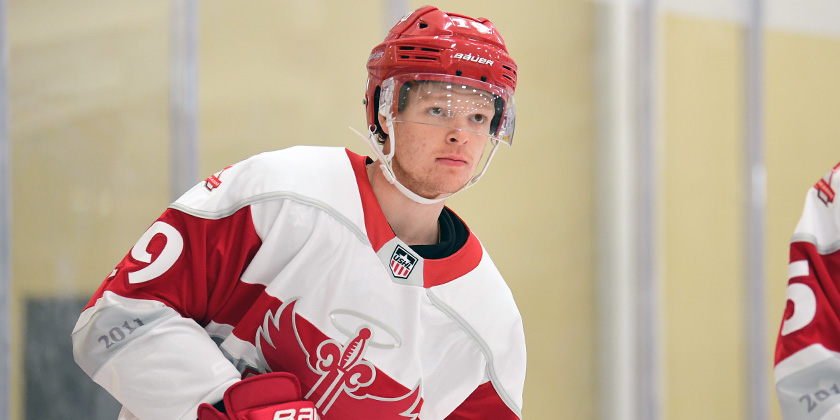
The National Letter of Intent signing period for men’s and women’s hockey begins on Wednesday (Nov. 13). Verbal commitments across the country will be putting their money where their mouth is — literally — as schools and players lock themselves into agreements and put their commitments on paper.
The NLI — which is separate from the NCAA — used to have an early signing period, which would last one week in November, and then an open period that would begin in April. That has changed this season. Now, players may sign an NLI beginning tomorrow and lasting until Aug. 1, 2020 (for the 2020-21 season).
What is an NLI?
Effectively, it’s a contract locking in the player’s verbal commitment to a school, and the school’s financial commitment to the player.
To really break it down to bare bones, it’s a one-year contract. The player agrees to attend the school for one season, and the school agrees to award that player an amount of athletic-based financial aid for one season. That’s all that’s promised. Players won’t sign new NLIs every season, but they will need to be notified by their school, at the end of every season, whether or not their athletic aid will be renewed or not.
NLI’s guarantee the offered scholarship for a period of one season.
The NLI closes the recruitment of the player who signs it. Once the NLI is signed, no other school is allowed to contact or recruit that player. That’s meaningful in all sports, but it’s becoming more noteworthy in hockey, where a “gentleman’s agreement” has existed in the past that is supposed to end the recruitment of players at their verbal commitment. The gentleman’s agreement has become a point of contention amongst coaches, and some programs, who are in disagreement with its premise, will not honor it.
Who signs an NLI?
Any incoming player that is receiving athletic-based financial aid next season is eligible to sign an NLI. Not every player has to sign an NLI, but they’re eligible to sign one. If there is a player who is recruited as a walk-on player and won’t be receiving aid next season, that player won’t be eligible to sign an NLI.
Also, players who are not yet seniors in high school cannot sign an NLI. If a player is recruited as a 16-year-old and is committed for the 2021 or 2022 season, that player is not eligible to sign an NLI during this signing period. The only players who can sign during this period are players who are enrolling next year, and will be receiving athletic financial aid.
Are NLIs binding, even in the case of a coaching change?
Yes! That’s something that not enough players understand. If you sign an NLI this week, or in the upcoming weeks, and there is a coaching change at your school at the end of this hockey season, the players who are signed are still bound to their NLI. There are avenues players can take to break the NLI, but it comes with costly penalties, including losing a year of competition.
The only way a player can be released from an NLI is if it’s mutually agreed upon by the school and the player.
